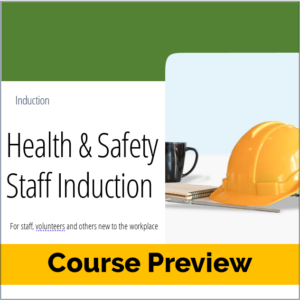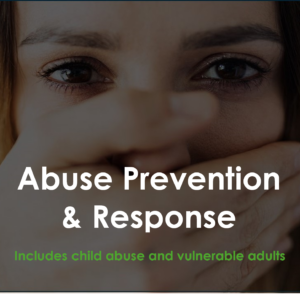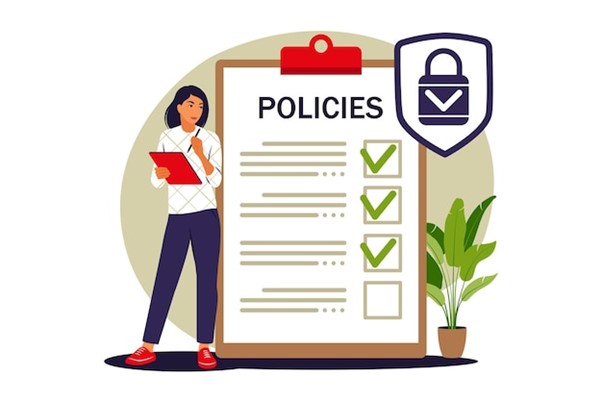Online courses
Learning v Compliance Reporting and Tracking
In organisations of many types, compliance reporting and tracking have led to a compliance-driven approach to operations.
However, a paradigm shift is now underway in the not-for-profit sector. Having long struggled to get staff on board with compliance and policy implementation, many nonprofit agencies are shifting from a compliance-driven approach to a learning-focused one.
In this blog, we’ll explore why a learning approach to compliance is superior to compliance tracking and reporting for an organisation that is required to meet regulations and standards like the Social Sector Accreditation Standards, Community Housing Performance Standards and Ngā Paerewa Health and Disability Service Standards.

1. Fosters a Culture of Continuous Improvement
Unlike compliance reporting, which often focuses solely on meeting minimum requirements and is backward looking, a learning approach to compliance encourages ongoing growth and development. By prioritising learning, agencies can foster a culture of continuous improvement, where kaimahi/staff members are empowered to seek out new knowledge, skills, and best practices.
2. Learning approach aligns with non-profit kaupapa
Nonprofit agencies typically have a person/whānau centred kaupapa and value the concept of voluntariness highly. A learning approach to compliance aligns with this, particularly, these short online courses developed specifically for non-profit agencies in Aotearoa. The learning approach to compliance assumes that most people want to meet their obligations. It allows the broadest possible compliance at the least cost both to the agency and to the individual.

3. Compliance reporting and tracking
Agencies accept these as a necessary evil. But compliance reporting and tracking can incentivise fast tracking and a tick-box mentality in an organisation. This can ultimately undermine an organisation’s capacity to improve and build quality of service and reduce staff motivation to innovate and “go outside of the box.” Check out our previous blog about the disadvantages.

4. Drives Innovation and Creativity
Compliance reporting tends to focus on maintaining the status quo—ensuring that existing processes and procedures meet regulatory standards. In contrast, a learning program encourages staff members to think outside the box, explore new ideas, and experiment with innovative approaches. This is facilitated by interactive content like scenarios and quizzes in the Policy Place’s online courses.

5. Supports Engagement and Retention of Kaimahi
Research consistently shows that organisations that invest in employee learning and development experience higher levels of engagement and retention. A learning approach to compliance demonstrates to kaimahi that their growth and professional development are valued as much as the organisation values compliance with external standards. This contributes to greater job satisfaction and loyalty and to an organisation’s ability to retain and attract quality staff.

6. Builds skills and ability to comply
Interactive elements and engagement in online courses can help reinforce key concepts and information retention about requirements for compliance. They provide real-world examples and practical scenarios to illustrate how policy content is applied in different contexts.
This practical application helps staff understand the relevance of policy content and how it translates into everyday practices and decision-making. Ultimately, it means that staff are better prepared for and empowered to meet their obligations.
Conclusion
While compliance reporting serves an important function in ensuring accountability and regulatory adherence, its limitations are increasingly apparent in the nonprofit sector. By embracing a learning-focused approach, nonprofit agencies can unlock a wealth of benefits—from fostering a culture of continuous improvement to driving innovation and creativity.
Ultimately, investing in learning programs isn’t just about checking boxes; it’s about empowering staff, enhancing organisational resilience, and advancing the kaupapa of human service agencies.
Onboarding staff to your policies and procedures
When onboarding staff you need introduce them to some key policies. But can you do that without boring them to death? And can you do it in a meaningful way?
Including policies in your onboarding process is important for many reasons. One, because policies and procedures help you manage risks and guide best practices in your organisation. Secondly, because staff have to know the policies and procedures in order to implement them. Thirdly, because when and if “crunch time” comes, you won’t be able to rely on your policies and procedures if you’ve never taken the trouble to bring them to your staff’s attention.
At the Policy Place, we deal with many clients who talk about the difficulty of getting staff to read and apply policies and procedures. So be assured, you’re not alone with this challenge.
In this post, we’re going to look at two ways staff can be introduced to policies and procedures in an organisation.

Option 1 – You’re killing me
This is when you start a job and are told to sit and read the policies and procedures, then sign off on them once done. In the old days the policies and procedures were a dusty old manual. More modern renditions might be on a Shared Drive or Online Platform like the Policy Place online policy service.
In our online policy service, we aim to make policy content more digestible and accessible. By using an online platform, we reduce the typical density and repetition in organisational policies by using internal and external hyperlinks. We support policy implementation by providing training and other helpful resource links.
The Policy Place gets a lot of positive feedback for its online policies. However, no matter what form policies and procedures take and how hard we try to make them user-friendly, policies and procedures just don’t feature in people’s “top of the pops” list.
Typically, people try and avoid policies. It doesn’t make sense therefore for an organisation to ask new staff to read through their policies and procedures and sign off on them for induction. What an excitement killer!
It’s also a strategy that is unlikely to succeed. Reading policies without having the knowledge or chance to apply the content to real situations and issues, makes it hard to grasp and understand the policy content let alone apply the content.

Option 2 – YES I get it!
A much better way of onboarding staff to policies and procedures is through short online courses that cover off the “essentials” in policy area.
The courses need to be interactive and give staff the chance to apply what they learn to problems and scenarios. The courses are not substitutes for the policies and procedures. But they should address “the essentials” and refer to your policies and procedures.
This type of course is now being offered by the Policy Place.
“Yes, I get it!” is how staff will feel at the end of one of the courses. The courses are interactive and give staff the opportunity through the courses to learn and apply key policy essentials in areas like health and safety and Abuse and Protection to real scenarios and problems. Other courses are in progress.
The courses get rid of the need for staff to have to read through and sign off on policies as part of their induction.
Most of the courses can be completed within 30-40 mins. Once completed, staff are issued with a certificate. This gives you the proof you need as a manager to assure yourself that staff do have the required understanding of key policies and procedures.
Onboarding staff to “Yes I get it”
You can aim high now with your inductions – for your new staff to be motivated and to understand the essentials of your policies and procedures. And with this as your starting point, policy implementation in your workplace looks a lot rosier!
Enrol NOW!
NEW Online Courses for policy implementation
The Policy Place’s new online courses are going to be a game changer if you’re one of the many workplaces that struggles to get their staff to use organisational policies and procedures,
Policy implementation is one of the most common challenges across industries. And it’s a major risk area for organisations.
The Policy Place’s new offering of online courses is addressing the problem head-on with exciting new courses that get people actively engaged in policy content.
In this post, we look at the importance of policies and procedures in the workplace and how The Policy Place’s pairing of policies and procedures with online courses will improve policy implementation.
Importance of Policies and Procedures
Policies and procedures are crucial to an organisation’s compliance and successful functioning. We’ve recently written about their importance (eg Why are policies and procedures important in 2024?)
We’ve also focused previously on how policies and procedures are a key risk management strategy. They help guide a workplace to deal with key hazards such as corruption, fraud, physical danger, mental injury etc.
They help prove that an organisation takes reasonable care of its people and assets.
If policies aren’t being used then managers need to do something about it.
If you’ve never brought a policy to the attention of staff, then if there’s a breach of policy, your ability to take disciplinary action will be severely undermined. Likewise, you can’t rely on your health and safety policy if staff haven’t familiarised themselves with it.
Online courses with policies
So knowing and using organisational policies and procedures is a “no brainer”. But easier said than done?
How do you get your people to actually use the policies?
The Policy Place’s online courses are going to help. The courses cover key compliance and risk areas of policies and procedures.
They address some of the key reasons for non-engagement and resistance to policies. They are online and can be done anytime anywhere. They are interactive and interesting.
They will ensure that staff, management, and governance understand their key responsibilities. Managers will also be able to monitor that kaimahi have completed courses and are updated on key policy areas.
Here’s a brief Intro to the first batch of courses recently released.
Governance compliance courses
 The courses for boards, collectives, and other governance groups (3 courses) are going to help them fulfill their responsibilities in areas like financial management, strategy and risk management.
The courses for boards, collectives, and other governance groups (3 courses) are going to help them fulfill their responsibilities in areas like financial management, strategy and risk management.
This will help current board members and make the job of recruiting and onboarding new governance/board members easier.
Health and Safety Induction for staff
 In the first batch of courses, the Policy Place also has some courses for staff.
In the first batch of courses, the Policy Place also has some courses for staff.
A useful and must-do course is the Health and Safety Induction course. It’s not long but sufficiently detailed to inform new kaimahi/staff about their responsibilities, how risks are managed in the workplace and the organisation’s health and safety responsibilities.
Abuse Prevention and Response Course
 Another important course, especially for organisations working with tamariki and vulnerable people is the Abuse Prevention and Response course. This course addresses different types of abuse, signs of abuse, responding and reporting abuse.
Another important course, especially for organisations working with tamariki and vulnerable people is the Abuse Prevention and Response course. This course addresses different types of abuse, signs of abuse, responding and reporting abuse.
For an organisation subject to the Social Sector Accreditation Standards or Ngā Paerewa Health and Disability Services Standards, it will help prove compliance with the standards. It will be a great onboarding tool. It will also be a good refresher for existing staff.
Conclusion
You’re not alone if you experience problems implementing your policies. We know it’s a widespread issue.
With our new online courses, we’re addressing the problem.
You can enrol in a course as an organisation or individual. So go ahead and enrol Now!



